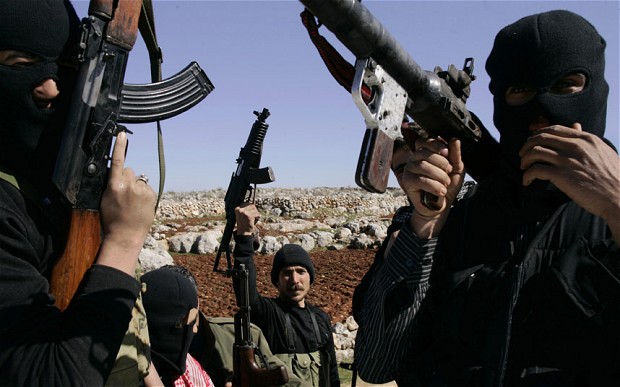Syria Snap Analysis: Deir Ez Zor & Human Rights Watch
See also Syria Special: Welcome to Phase Two Insurgency
Bahrain, Syria (and Beyond) Live Coverage: The Conditions for Dialogue
Turkey Live Coverage (19 March): New Year Celebrations, Clashes, and the Syria Crisis
 http://tgr.ph/GAmbSCThis is a comment on the article I wrote last night, Syria Special: Welcome to Phase Two Insurgency, responding to today's news.
http://tgr.ph/GAmbSCThis is a comment on the article I wrote last night, Syria Special: Welcome to Phase Two Insurgency, responding to today's news.
Basically, I argue that the Free Syrian Army has reached a new level of sophistication in their attacks, and have entered a stage that will be characterized by ambush attacks, improvised explosive devices, and other guerrilla tactics. I also respond to Joshua Landis' claim that we are likely to see more terrorism and a move towards a more sectarian opposition. Basically, I argue that the terrorism that is on the rise in Syria doesn't seem to be directly linked to the main-stream opposition (a major difference from Iraq or Afghanistan) and so far the most sectarian violence is evident in Homs and Idlib, but it is fairly isolated.
There are two developments today that intersect my article. The first, that the opposition fighters, the FSA, has withdrawn from Deir Ez Zor. The official statement suggests that the withdrawal was to avoid civilian casualties. I certainly would not question this motivation. However, there is another reason for the withdrawal.
It's a strategic retreat, and it was probably the plan all along. In recent days, the FSA suddenly launched attacks in and around Deir Ez Zor, catching the regime off guard. The result? The regime rushed huge amounts of troops and tanks to the city. Yesterday we received video showing just a small part of that convoy, dozens of tanks, but the bigger picture was that hundreds of armored vehicles were rushed to respond. The FSA cannot win against such threat.
But for now, it does not have to. The sheer cost of such a response, and the psychological blow to the military that such a response was necessary, and ultimately fruitless, was probably enough. The FSA fighters will go on to fight again. Yesterday, I suggested that this is what they did in Idlib. Now, I'm suggesting that this is what they are likely to do in every region they fight, at least for the time being. Phase two insurgency.
The second development, which would seem to erode part of my position, were the claims made by Human Rights Watch that the opposition is also guilty of abuses and has carried out kidnapping, torture, and even murder, specifically targeting regime soldiers.
However, taking a closer look at these allegations, there are actually relatively few incidents (perhaps 20-30 kidnappings), most of which involve either the infamous Al Farouq battalion or the nearly as infamous Khaled Bin Al Walid battalion in Homs. Frankly, there is probably truth to some of these allegations, as these units have a bad reputation even among activists whom we've spoken with about the FSA. Most of the rest of the allegations took place in Idlib, another area ravaged by Assad forces.
Also, HRW admits that most of these abuses are taking place outside of the mantle of the formal opposition:
Many of the antigovernment groups reported to be carrying out abuses do not appear to belong to an organized command structure or to be following Syrian National Council orders. But Syria’s opposition leadership has a responsibility to speak out and condemn such abuses, Human Rights Watch said. On March 1 the SNC created a military bureau to liaise with, unify, and supervise armed opposition groups, including the Free Syrian Army (FSA).
It's also important to note that some of what the Human Rights Watch is calling abuse the Free Syrian Army is calling acts of war.
Joshua Landis has been arguing that this conflict is more heavily sectarian than I believe it to be. He also argues that the conflict is likely to become more sectarian, and I can only agree with that statement in a heavily qualified response. The statement from Human Rights Watch today does not significantly change that because it has not provided much news (we knew about some of these incidents in Homs and Idlib). However, the report does provide documentation of these abuses, and there is certainly a fear that as the conflict drags on, if there is not an end in sight then such cases will increase in frequency and magnitude.
Which brings me to my last point (analysis coming soon): The worst abuses seem to have occurred in Homs and Idlib, while reports of abuses is other locations are extremely scarce. This means that only the most desperate pieces of the opposition have turned to sectarian violence. Even then, cases are fairly limited. However, what happens if the opposition across the entire country becomes as desperate as Homs?

 Tuesday, March 20, 2012 at 13:52
Tuesday, March 20, 2012 at 13:52
Reader Comments